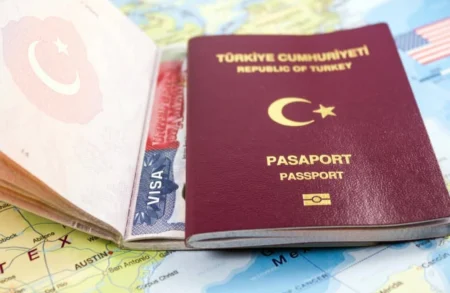Introduction
Satta Matka is not just a game; it’s a cultural phenomenon that has woven itself into the fabric of Indian society, particularly in urban areas. Originating in the bustling streets of Mumbai in the 1960s, this gambling game has undergone significant evolution, transitioning from a simple betting system to a complex network that captivates millions. This article explores the origins, mechanics, social implications, and the future of Satta Matka, shedding light on both its allure and the challenges it poses.
The Birth of Satta Matka
Historical Origins
The term “Satta Matka” is derived from the Hindi words “Satta,” meaning betting, and “Matka,” referring to an earthen pot used for drawing numbers. The game began in the post-independence era, initially linked to the betting on cotton prices at the Bombay Cotton Exchange. As the popularity of this betting method soared, it quickly morphed into a number-based gambling game.
In the early years, players would place bets on the opening and closing rates of cotton, which were announced daily. As the practice evolved, the game adopted the format of drawing random numbers from the Matka, allowing players to place bets on these numbers. By the 1980s, Satta Matka had solidified its status as a significant gambling activity, drawing in a wide variety of players from all walks of life.
Rise of the Bookies
As the game grew, so did the role of bookies—individuals who facilitated betting by collecting wagers and announcing results. These bookies became central figures in the Satta Matka ecosystem, often operating in a shadowy world, free from regulation. Their influence helped normalize gambling culture in certain urban areas, even as it existed outside the legal framework.
Understanding the Game
Basic Mechanics
At its core, Satta Matka revolves around betting on numbers. Here’s how the game typically unfolds:
- Number Selection: Players choose a combination of three numbers, usually ranging from 0 to 9. They can also opt for variations like betting on single or double numbers.
- Placing Bets: Bets are placed through bookies, who manage the betting process. Players submit their chosen numbers along with the stake amount.
- The Draw: At a predetermined time, numbers are drawn from the Matka. This can be done using traditional earthen pots or through online systems in modern versions.
- Determining Winners: Winning combinations are established based on the drawn numbers. Players can win by matching their selected numbers to those drawn in various formats, including single, double, or full combinations.
- Payouts: The payouts depend on the type of bet and the odds set by the bookies. Successful players can earn substantial returns, making the game attractive.
Variations and Formats
Satta Matka has several variations that add layers of complexity and excitement:
- Kalyan Matka: One of the most popular formats, Kalyan Matka has specific rules and a distinct drawing schedule, attracting a large player base.
- Milan Matka: Similar to Kalyan, this variant introduces unique betting options and combinations, appealing to seasoned players.
The Allure of Satta Matka
Why People Play
The enduring appeal of Satta Matka can be attributed to multiple factors:
- Quick Wealth: The promise of making quick money from relatively small bets draws many individuals into the game.
- Social Aspect: Satta Matka is often played in groups, fostering camaraderie and shared excitement among participants. This social interaction enhances the overall experience.
- Adrenaline Rush: The anticipation of the draw and the potential for a big win create an exhilarating atmosphere, keeping players engaged.
- Accessibility: The advent of online platforms has made Satta Matka accessible to a wider audience, including younger players who are tech-savvy.
Legal and Social Implications
Legal Status
Despite its popularity, Satta Matka operates in a legally ambiguous space in India. The Public Gambling Act of 1867 prohibits most forms of gambling, but some states have legalized specific types of betting. Satta Matka remains illegal in many areas, resulting in a clandestine network of operators and players.
Social Impact
The rise of Satta Matka has significant implications for society:
- Addiction: Many players fall victim to gambling addiction, lured by the thrill of winning. This can lead to devastating financial consequences for individuals and their families.
- Economic Strain: Players often risk their savings or go into debt to sustain their gambling habits, which can contribute to broader economic issues.
- Criminal Activities: The underground nature of Satta Matka has been linked to organized crime, as bookies and illegal operators exploit the lack of regulation.
Ethical Concerns
The social ramifications of Satta Matka raise ethical questions regarding its impact on communities. While some view it as a harmless pastime, others argue that it leads to addiction, family strife, and financial ruin.
The Shift to Online Satta Matka
Digital Transformation
With the rise of technology, Satta Matka has shifted from traditional street betting to online platforms. This transformation has both benefits and challenges:
- Convenience: Players can engage in Satta Matka from the comfort of their homes, removing barriers to participation.
- Broader Reach: Online platforms attract a younger demographic, increasing the overall player base and introducing new players to the game.
- Game Variety: Digital platforms often offer multiple formats, enhancing the gaming experience and providing more betting options.
Challenges of Online Gambling
However, the shift to online Satta Matka is not without its risks:
- Regulatory Issues: The legality of online gambling is often murky, leading to potential exploitation by unscrupulous operators.
- Fraud Risks: Players may encounter scams or untrustworthy platforms that do not honor payouts, highlighting the need for due diligence.
- Addiction Concerns: The easy access to online gambling can exacerbate addiction issues, necessitating responsible gambling measures and support.
Future of Satta Matka
Potential for Regulation
The conversation around regulating Satta Matka is gaining momentum. Advocates argue that a legal framework could offer consumer protections, ensure fair play, and mitigate the risks associated with unregulated gambling.
Evolving Game Formats
As technology continues to evolve, Satta Matka may incorporate new elements, such as skill-based components or blockchain technology for secure transactions. This could enhance transparency and player trust.
Conclusion
Satta Matka stands as a testament to the complex interplay between culture, chance, and social dynamics in India. While it offers excitement and community, it also poses significant risks and challenges. As the game evolves, navigating the balance between its allure and the need for responsible practices will be crucial. Whether as a thrilling pastime or a source of social concern, Satta Matka will likely continue to be a captivating topic in the realm of gambling, reflecting the broader issues facing society today.









